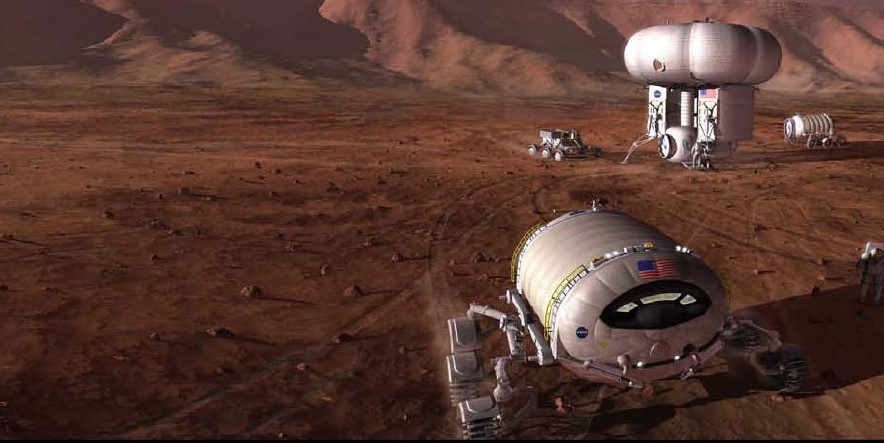Earlier this year, President Trump inspired hope in many Americans that have long wished to see a resurgence in NASA’s manned space exploration endeavors, when he announced his goal to send human beings to Mars.
The president was so passionate about a manned trip to mars, that during a teleconference with NASA astronaut Peggy Whitson aboard the ISS, he asked Whitson what kind of timeframe we can expect before placing American feet on the Red Planet. Whitson told him the budget he proposed could get them there as soon as the 2030s, which President Trump didn’t seem pleased with.
“Well, we want to try and do it during my first term or, at worst, during my second term, so we’ll have to speed that up a little bit, okay?” The president told her.
“We’ll do our best,” was all America’s most experienced space walker could muster in response. Now, it would seem even their best can’t cut it with NASA’s sparse budget.
During a meeting of the American Institute for Aeronautics and Astronautics on Wednesday, William Gerstenmaier, NASA’S chief of Human Space Flight, admitted that the funds just aren’t there to mount a successful Mars mission.
“Through this horizon, through the 2030s, I can’t put a date on humans on Mars, and the reason really is … at the budget levels we described, this roughly 2 percent increase, we don’t have the surface systems available for Mars,” Gerstenmaier said. “And that entry, descent and landing is a huge challenge for us for Mars.”
While the nation’s civilian space agency has not provided an exact figure as to how much such a trip would truly cost, some experts within NASA have speculated. In 2012, Brent Sherwood, who runs the famed Jet Propulsion Laboratory for NASA, estimated that such an endeavor would likely cost somewhere in the neighborhood of $100 billion over the course of thirty to forty years. Pascal Lee, the director of the Mars Institute, provided a more expensive estimate this May; suggesting the trip could cost tax payers as much as $1 trillion over 25 years.
The Apollo Program that took America to the Moon in the 1960s and 70s cost an estimated $210 billion or so, when adjusted for inflation.
Of course, this doesn’t necessarily mean we won’t see an American flag waving in the maroon sand storms of Mars any time soon – but it does mean that flag may potentially have to be carried there by a private corporation’s space craft.
Elon Musk, CEO of SpaceX and other technology ventures, released a 16-page document last month laying out his plans to begin ferrying colonists to Mars far sooner than one might expect, with a deadline set for an unmanned mission of 2018, and SpaceX’s first manned Mars mission forecasted to take place as soon as 2025.
“I think there are really two fundamental paths. History is going to bifurcate along two directions. One path is we stay on Earth forever, and then there will be some eventual extinction event,” Musk wrote.
Already have an account? Sign In
Two ways to continue to read this article.
Subscribe
$1.99
every 4 weeks
- Unlimited access to all articles
- Support independent journalism
- Ad-free reading experience
Subscribe Now
Recurring Monthly. Cancel Anytime.
“I do not have an immediate doomsday prophecy, but eventually, history suggests, there will be some doomsday event. The alternative is to become a space-bearing civilization and a multi-planetary species, which I hope you would agree is the right way to go.”
NASA has not officially thrown in the towel on a Mars mission, of course, and changes to NASA’s budget (which currently sits at approximately one half of one percent of the total federal budget) could easily change things. Civilian advances in space science could also curb costs over time. Like the Apollo program, space travel is, more than anything, an exercise in problem solving – but problems often cost money to be solved. It stands to reason that while private organizations like SpaceX also work to master space travel, some solutions to expensive problems may present themselves, allowing NASA to skip some investments and reap the rewards of others’ R&D.
Cropped image courtesy of Wikimedia Commons









